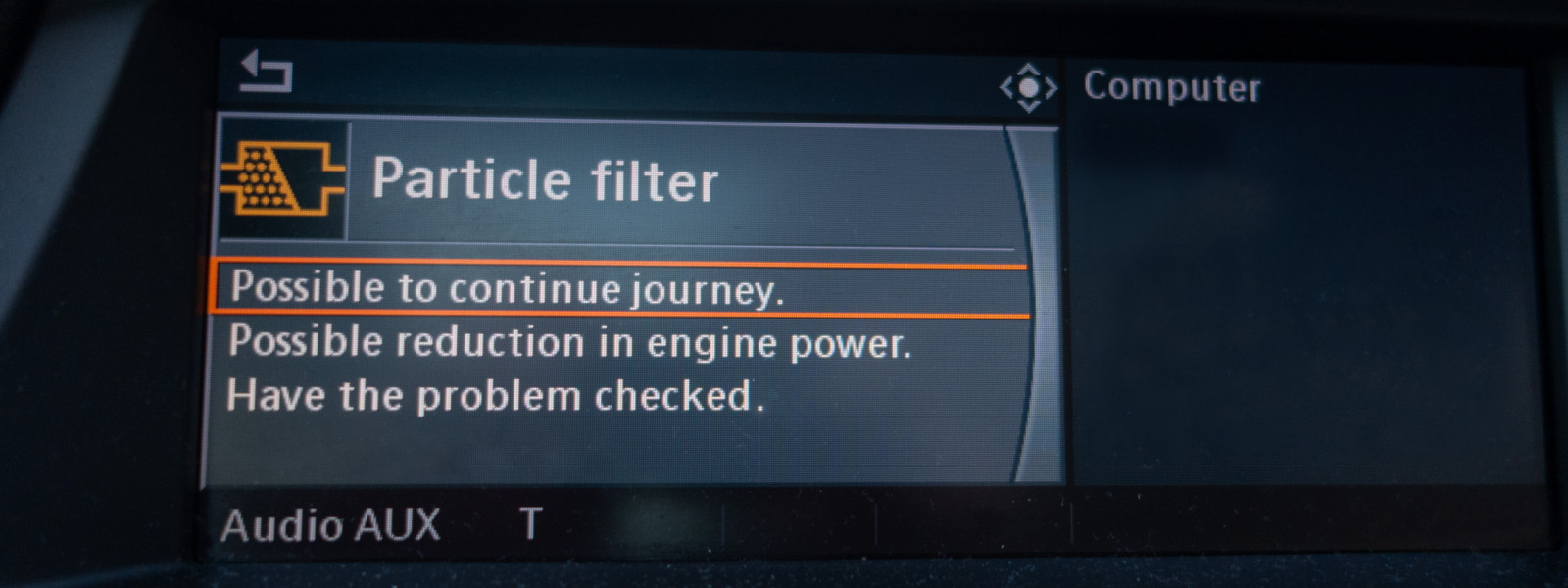Land Rover and Diesel Particulate Filter Malfunction

In the most recent years, modern diesel engines have gained popularity and the decision to ownership has become a selling point for most car enthusiasts; excellent fuel economy, smooth power delivery, loads of torque at low rpm, etc. While these features on their own are desirable, there are industry-standard caveats that may impact whether a diesel vehicle is for you, such as the diesel particulate filter or DPF.
Land Rover diesel version models come equipped with the diesel particulate emissions control system, and where some consumers may thrive with this system, others may not. This article aims to explore the purpose of the DPF, how to recognize and diagnose potential DPF problems and what to do if your Land Rover has a DPF problem.
What is DPF?
You have probably seen diesel trucks or heavy machinery puffing out thick black smoke. Diesel particulate filters are installed to rectify this, mounted on the exhaust system, its job is to collect soot, thick black dust, and combustion residue exiting within the engine. Over time, the DPF gets full, and the emissions system will then perform something called a “regeneration process”. This process starts with burning the contents of the filter at a high temperature using hot exhaust fumes from the engine; this is the most crucial part of diesel particulate emissions control system. Controlled by the Engine Control Unit (ECU), the DPF is monitored in order to enable the regeneration process to occur by allowing exhaust fumes to get hotter while informing the driver with the appropriate icons on the dashboard.
On Land Rover vehicles, there are three different DPF icons that can show on the dashboard:
Amber – Indicates that regeneration is needed and suggests you drive at moderate speeds (37 to 40 mph) for at least 20 minutes so the filter will complete the regeneration process
Red – It means that the filter is full and that you will probably experience a lack of performance or that the vehicle is about to engage into safe/limp mode
Green – The green icon shows that the regeneration process is over and that you can continue using your vehicle as you wish.
Land Rover Diesel Particulate Filter Problems And FAQ
Although the DPF is an essential component of modern diesel engines, it is also known to be somewhat problematic in everyday use. Regardless of the vehicle's mileage, model year, or engine, the most common concern results from a clogged DPF that in turn does not allow the regeneration process to occur. The question then becomes, how is it possible for DPF to get clogged if it is designed to regenerate itself and burn off soot every time its sensors detect a high level of residue trapped inside?
Vehicles that are rarely driven on the highways, used mainly in the city and on short trips, tend to develop a lot of soot. The amount of combustion residue generated on short trips are often combined with the exhaust system not adequately warming up to the operating temperature to allow the system to perform as designed. This is problematic because the system cannot perform the regeneration process (or complete it) if driven below the suggested speed limit and less than the required time. The vehicle would then keep collecting soot and not releasing it as often as it should, resulting in a clogged DPF, illuminating a red icon on the dashboard.
How To Recognize Land Rover Diesel Particulate Malfunction?
Apart from the red icon on the dashboard, the vehicle may register an Engine Light, with several signs that will prompt you to visit your Land Rover Specialist. Along with the messages on the dashboard, you may experience a reduction in Engine performance, such as loss of power or torque. You may notice that your fuel economy is much higher than usual, hear your Engine cooling fan constantly working from the over engine exertion. If early symptoms are ignored, it could go so far as the vehicle will not start after a certain point.
What To Do If Your Land Rover DPF is not Regenerating?
This article’s aim has been to demonstrate the significance that the DPF has when it comes to the Land Rover’s emission and engine control systems. Regeneration of the diesel particulate filter is essential to the vehicle’s proper functionality and without proper care and attentiveness, a clogged DPF can render the vehicle inoperable. If a DPF is not regenerating, visiting a Land Rover specialist in time, to avoid replacing the DPF, which can be a costly repair for the average consumer. Visiting a specialist in time, will allow a forced regeneration process to be performed at their facility to restore the filter to its original state.
Knowing the requirements of diesel modeled engines, allows for an informed decision to be made on the potential perks and challenges to ownership. If the intent is to drive long distances for extended periods of time, a diesel Land Rover would be a fantastic vehicle to drive. If not, there may be more complications along the way.